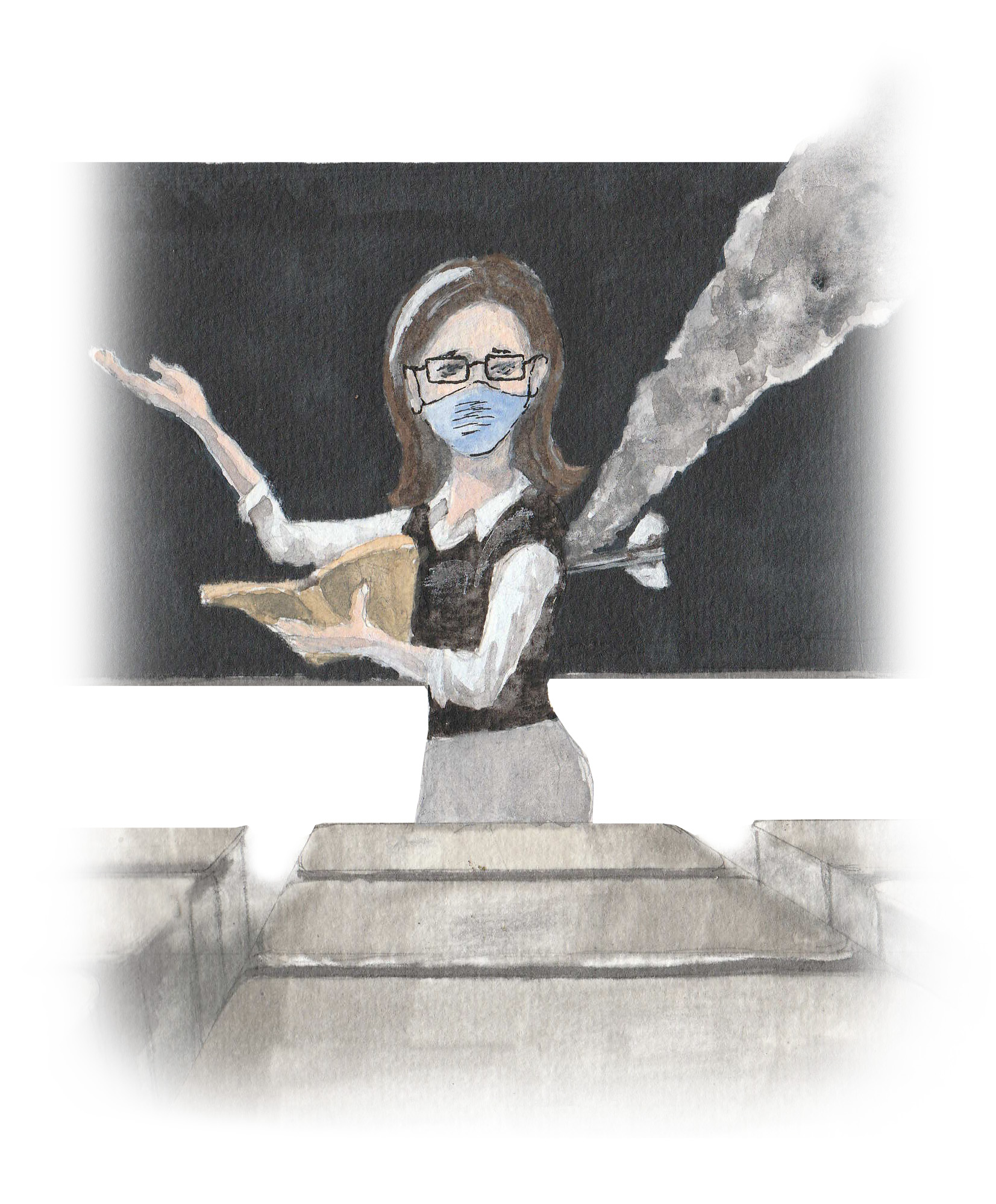With devotion, teachers are standing by their students to maintain their learning and aid in the development of the social, emotional and academic skills during the COVID-19 pandemic. Unfortunately, this comes at a personal cost to teachers who are overworked to the point of exhaustion.
Without appropriate resources to navigate the cascading social environment that the novel coronavirus has triggered, teacher burnout is at an all-time high. In some cases, students are performing at a lower academic level and are achieving poorer social adjustment skills.
As a first-year teacher, I have seen my colleagues meet students with compassion and patience, feigning confidence that they don’t have in order to make their pupils feel safe and encouraged. In addition to providing instruction, teachers are struggling to meet the high expectations of being a coach, therapist, caregiver, cheerleader, detective and, now, a health-protector.
Teachers are spending more and more time enforcing health and safety restrictions, doing things like sanitizing their classrooms, monitoring handwashing and ensuring physical distancing, thereby leaving less time for academic instruction.
Students and staff are concerned for their own health and the health of their family members. The anxiety skyrockets when teachers are given expired masks that cause skin rashes and headaches for protection. Fears also inflame when educators are told there is a COVID-19 case or two within their schools, and crucial details about contact tracing are left out for prolonged periods of time. On top of this, new and substitute teachers have limited or no sick-time available to cover any pandemic-related absences. If teachers are worried about possible exposure or are symptomatic and choose to self-isolate, use up their sick time and test negative, they are the ones who have to pay the consequences later if they transmit the novel coronavirus. The province and school districts are pushing teachers between a rock and a hard place during a perilous crisis, thereby endangering both staff and students.
Moreover, teachers are overwhelmed with the volume of work, having to continuously revamp their programs due to changing COVID-19 rules. They have twice as much work preparing lesson plans, assignments and assessments for both in-person and online instruction — not to mention these circumstances have made things increasingly difficult for students with exceptionalities or no access to home computers.
For many teachers, online instruction is unchartered territory for which they are not formally trained. Consequently, it takes significant time to prepare creative lessons that engage students. Professional development days to develop these skills, as well as days to prepare for lesson planning, have been reduced due to blended learning. As a result, teachers have been forced to do this on their own time.
Further, teachers are on call around the clock from both students and parents, willingly responding to emails and calls at all hours, providing support even while exhausted. They spend considerable time following up with vulnerable and at-risk students, especially those who have not been connecting through distance or in-person learning. They are also required to cover for any substitutes if they call in sick.
School space is often an issue due to social distancing. Classrooms have been replaced by libraries, cafeterias and even carts as some teachers travel between various learning spaces. Teachers also constantly contend with modifying classroom configuration in order to accommodate a fluctuating number of students in the room. Outdated and unreliable equipment results in the need to change lesson plans on the fly, which is complicated by blended instruction.
Parsimonious government leaving teachers out to dry
Each day, teachers continue to rise above these stresses for their students, even when they are on the verge of collapse. Teachers need help. The right kind of help.
While nearly 500 educators and school leaders have signed a letter requesting more staff in schools, the previous education minister, Kelvin Goertzen, who was recently replaced by Cliff Cullen, responded to the calls for help by announcing that the province is hiring 100 teachers and 20 education assistants for a resource centre to support remote learning. But, because none of these teachers will work in classrooms, teacher workload and stress will likely not be reduced in any significant proportion.
Premier Brian Pallister also announced that a rapid-testing pilot project would be launched for Winnipeg educators in mid-January. This serves to return qualified teachers to the classroom faster by reducing long waits for COVID-19 test results. But, there are no plans for rapid testing the students. Although little help is better than none, the province’s action still does not provide sufficient resources to address teacher safety and workload needs.
Teachers have been vocal in communicating their needs. In their letter to the government, they have requested more resources in the schools, including funding for more substitute teachers and educational assistants as well as equitable access to technology devices for staff and students. They have also requested more mental health supports.
The president of the Manitoba Teachers’ Society, James Bedford, further articulated the need for paid sick leave for all staff, safe and sufficient personal protective equipment and assurance that educators hired for the remote learning centre will not be at the expense of teachers in the classroom. Investments in these steps can help mitigate teacher burnout and stress.
Teachers are feeling vulnerable and exposed as they continue to shoulder greater responsibilities to keep students learning and keep students safe.
Teachers are standing by students. Someone needs to stand with us.


